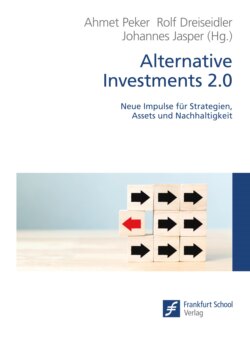Читать книгу Alternative Investments 2.0 - Группа авторов - Страница 37
На сайте Литреса книга снята с продажи.
2.4 Co-Investment and Secondaries in the Corporate Private Debt Space
ОглавлениеFor most of its limited history, private debt (direct lenders in particular) provided facilities to companies in the lower and middle markets, where loans are typically too small to be of interest to a lending syndicate. As the asset class has grown, however, some private debt managers are seeking partners so they too can lend to the upper end of the market.
There are two primary options when it comes to finding partners:
The first option follows the co-investment model that has become popular among private equity investors. Here, the GP identifies one or two like-minded partners – often a Limited Partner (LP) – to provide the capital necessary to close out a deal.
The second option is the club deal whereby the private debt manager looks to put together a small syndicate made up of four to six co-lenders. Club deals are attractive because they can accommodate larger deals than co-investments can.
However, because the syndicate is often made up of competitors, club deals can be complex, resulting in greater governance risk. In fact, lack of alignment is one of the reasons private equity managers soured on club deals and moved toward the co-investment model. By some estimates, co-investments make up approximately 20% of the private equity market. In contrast, the co-investment market in private debt is significantly smaller. While co-investments have been around in private debt since well before the GFC, they are just now gaining traction. Of the USD 350 billion in annual corporate direct lending, we estimate that co-investments represent only 5%.
StepStone expect this proportion to grow over time. One can already observe an increase in both the number and the amount available for co-investors during the COVID-19 outbreak. To better diversify their portfolios and limit their exposure to individual companies, underwriting GPs have given to making smaller investments. To maintain their underwriting capabilities and compete for interesting opportunities, they are turning more toward like-minded partners to secure the necessary capital.
Co-investments provide financial benefits for the GP and LP alike. From the GP’s perspective, the most obvious advantage of co-investments is the ability to access capital needed to complete a transaction. Maintaining control over an investment, something notably absent in most club deals, and staying within the investment parameters set forth by the fund are other important considerations.
Also, co-investments offer several financial advantages to LPs:
First, they are typically done on a no-fee, no-carry basis, thereby improving returns.
Second, co-investments accelerate capital deployment and hence improve the dollar return for the investor.
Third, co-investments provide more flexibility for evergreen structures to reinvest capital returned by borrowers, thus mitigating the opportunity cost of fund investments.
Lastly, co-investments give investors greater control over their portfolio.
In particular, LPs can achieve benefits from diversification since they can access deals with managers of varying sizes, in different regions, with different sector specializations. As a result, co-investments are more efficient in terms of cost, capital deployment, returns and diversification.
